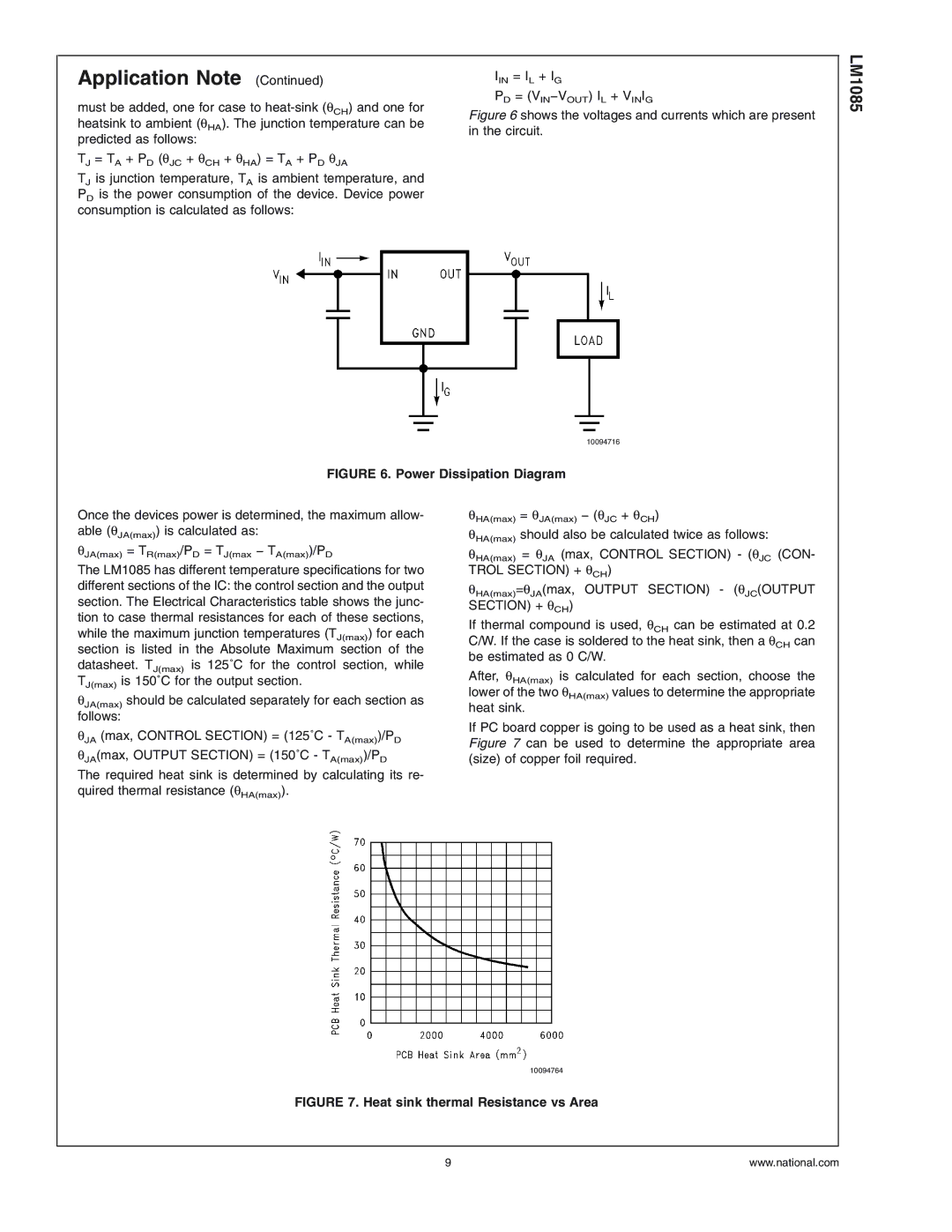LM1085 Series specifications
The National Instruments LM1085 Series is a range of low-dropout (LDO) voltage regulators that are designed for various applications requiring precise voltage regulation and minimal power loss. This series is particularly known for its high efficiency and excellent thermal performance, making it suitable for both consumer electronics and industrial systems.One of the standout features of the LM1085 series is its low dropout voltage, typically around 1.5V at maximum load. This characteristic allows these regulators to function effectively even with minimal headroom, which is essential for battery-powered applications. The series supports output voltages of 1.25V to 3.3V, enabling designers to tailor the voltage output to meet specific requirements, thereby enhancing system flexibility.
The LM1085 series incorporates several advanced technologies. It utilizes a high-speed, low-noise architecture, which contributes to stable operation across a variety of load conditions. Additionally, the regulators have built-in protection features, including thermal shutdown and current limiting, which prevent damage due to overheating or short-circuits.
Another characteristic that sets the LM1085 series apart is its ability to deliver a maximum output current of 3A, catering to applications with higher power requirements. This makes it an excellent choice for powering microcontrollers, sensors, and other digital circuitry that demand stable voltage levels.
The LM1085 series is also compatible with a range of external components, such as capacitors and inductors, allowing engineers to customize their designs based on specific requirements, including transient response and load variation. Furthermore, its low noise output makes it ideal for sensitive applications in audio processing and communication systems.
In summary, the National Instruments LM1085 Series stands out due to its low dropout voltage, high current capacity, integrated protection features, and compatibility with external components. Its efficient design makes it a preferred choice for applications where precise regulation and efficiency are paramount. Whether for consumer electronics, automotive, or industrial systems, the LM1085 series offers reliable performance that meets the needs of modern electronic designs.

